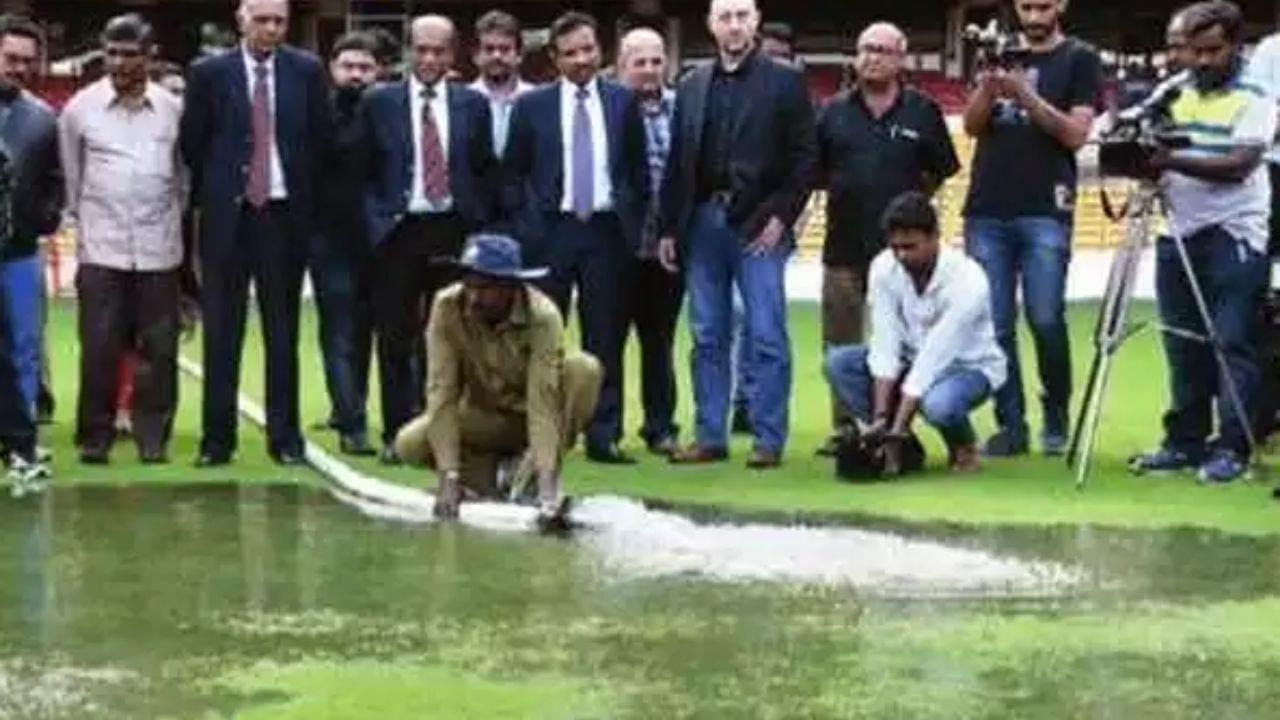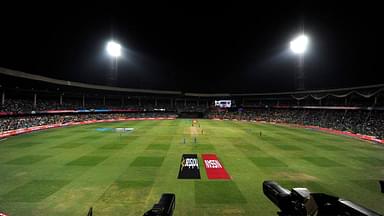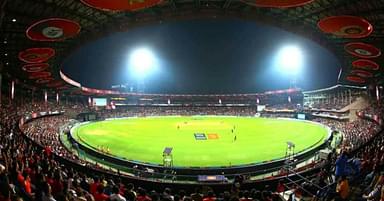Sub air system in cricket stadium: Despite the innovative drainage facility, chances of resumption of 5th T20I between IND vs SA look grim.
Advertisement
During the fifth T20I of the ongoing South Africa’s tour of India at the M. Chinnaswamy Stadium in Bengaluru, the rain Gods have yet again made an appearance after mere 3.3 Overs into the match.
It is worth of a mention that, the start of play had already been delayed by 20 minutes due to a brief yet intense spell of downpour right before the first delivery, which resulted in the series deciding match being reduced to 19 Overs-a-side each.
The bad news for the fans is that the present rainfall at the venue doesn’t seem like a passing shower as the downpour is quite intense, which has started to puncture the spirit and enthusiasm of the spectators.
The aforementioned development has meant that the match is losing one Over for every four minutes lost, which ultimately means that for it to be a 5 Overs contest, the play will have to resume by 10:12 pm IST, which is around 25 minutes from now (at the time of writing).
Sub air system in cricket stadium
A torrential downpour being witnessed at the stadium has meant that despite the SubAir system, the drying process will take some time, if at all the rain Gods show some mercy.
The SubAir surface aeration and vacuum-powered drainage system, or simply the SubAir system is the first of a kind Cricket infrastructure innovation in the country, which was installed at the M. Chinnaswamy Stadium in the year 2017.
The technology helps prevent water logging at the stadium ground for long as it reportedly is capable of draining water 36 times faster than under normal circumstances (information source: Cricbuzz).
Basically, SubAir system acts as a vacuum and absorbs water into the pipes much quicker.
In layman’s words. https://t.co/ROhIFVoJCU
— Bharath Ramaraj (@Fancricket12) June 19, 2022
The system functions by sucking the water out via the super absorption pipes at the rate of over 10,000 litres a minute from the time it begins to rain at the ground. The technology works via activated signals from the remote sensors installed in the field.
The aforementioned technology incurred an investment cost of INR 4.25 Crore, borne by the Karnataka State Association Stadium (KSCA). Moreover, the maintenance of this vacuum-powered drainage system will require the KSCA to shed its maintenance cost of INR 7 lakh per year.







